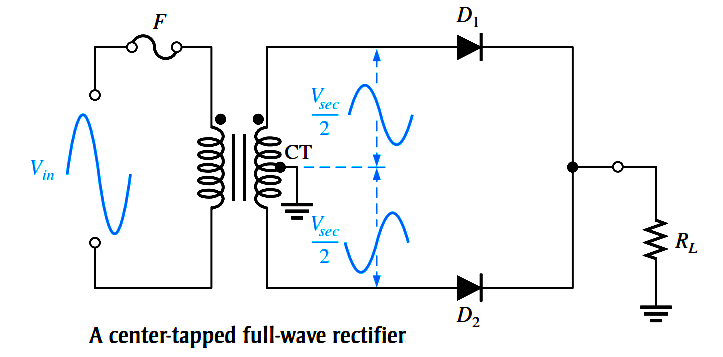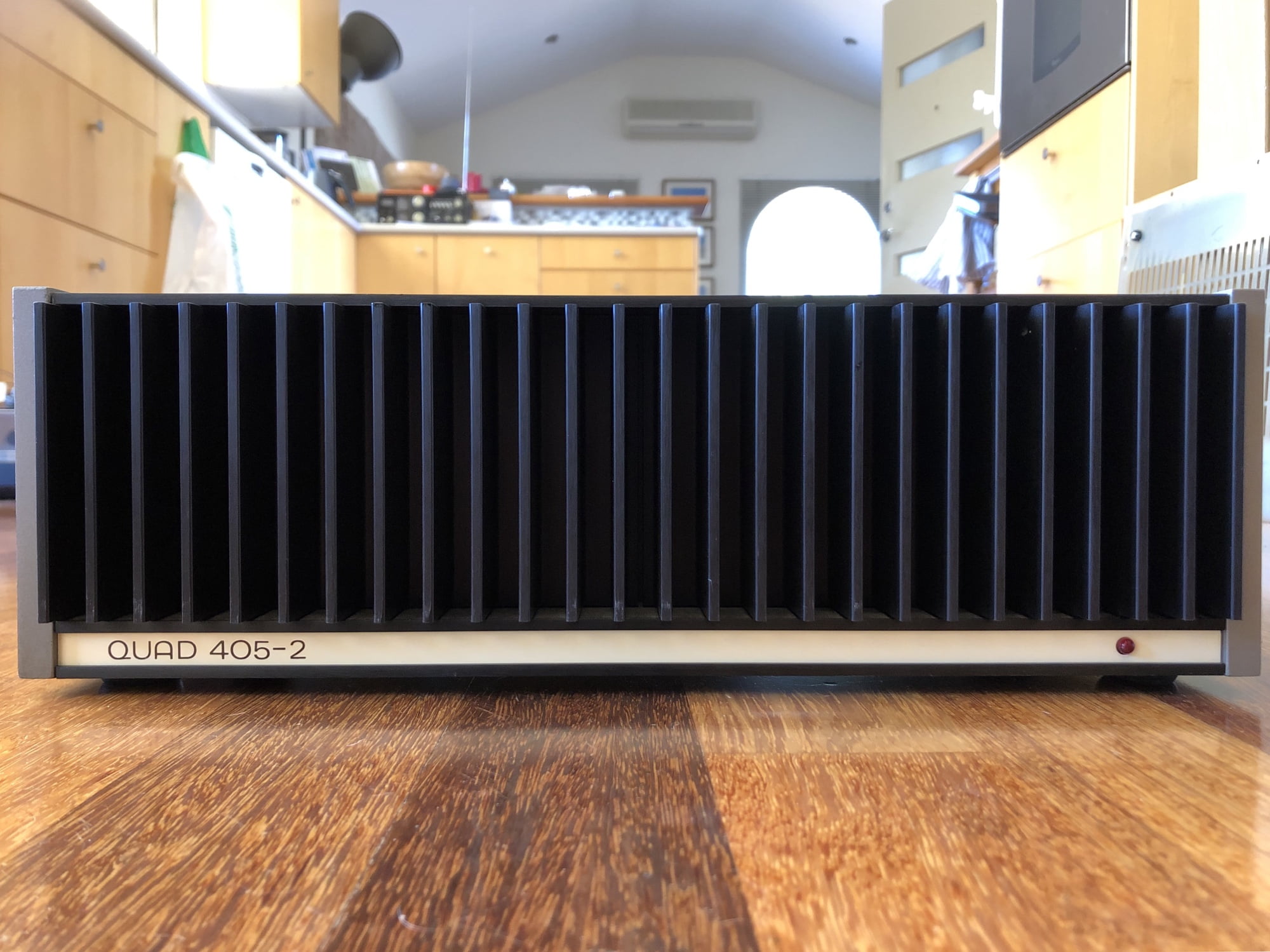the two amplifier boards I'm thinking of using as they are rated at >= + -30V, <= + -50V
If they need dual positive AND negative supplies - which is common for many analog and audio circuits - you need a different rectifier configuration and transformer setup.
eg. This would work for something like you describe, using a dual 30V secondary or a centre tapped 30-0-30 secondary transformer:
The diodes could be separate or a bridge rectifier module.
It's like two, two-diode centre tap full wave rectifiers back to back, giving opposite polarities from the same transformer windings:
A center-tapped rectifier is a type of full-wave rectifier that uses two diodes connected to the secondary of a center-tapped transformer, as shown in Below Figure. The input voltage is coupled through the transformer to the center-tapped secondary. Half of the total secondary voltage appears...

instrumentationtools.com
Another important point with transformers and rectifiers:
Transformers are not perfect; the voltage reduces as the load increases and the rated secondary voltage is (or should be) what is given under full load, and assuming the primary voltage matches.
They have a regulation factor which defines how much the voltage changes from no load to full load.
Larger transformers generally have better regulation than small ones; eg. a 200VA rated one may have 8% regulation, while a 1VA one could have 20% regulation.
That is how much the "off load" voltage is likely to increase, compared to the rated voltage.
That's important for capacitor voltage ratings and maximum supply voltage of such as the amp you mention.
A 30-0-30 transformer should give around positive and negative 41V using the rec circuit above.
Under full load.
If it's regulation was poor, 20% or more, the off-load voltage could be around 50V
And, if you use a "230V" primary transformer on UK mains which is still actually 240V, the secondary voltages will be increased that few percent further as well.
A lot of the time it's not critical - but if the output voltage from a transformer/rectifier combination could be anywhere near the voltage limits for any component, it's worth a bit of extra thought and care.







